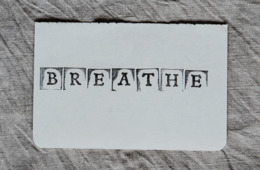
Meditation has long been praised as a path to inner calm and emotional balance, but it’s not the only way to nurture mental health. Hobbies, the things people do simply because they love them, are powerful, accessible tools for restoring focus, joy, and connection. They engage the mind, ground the emotions, and remind us that life isn’t meant to be lived entirely on autopilot.
Incorporating hobbies into daily life can ease stress, boost mood, and improve overall well-being. Whether through art, writing, music, movement, or time outdoors, the act of doing something purely for pleasure can bring peace and purpose back into everyday routines.
Yoga: Finding Balance and Strength
Yoga offers a balance between movement and mindfulness. It strengthens the body, calms the mind, and builds resilience against stress. There are countless styles to explore, from gentle yin yoga to intense vinyasa flows, each providing unique benefits for both physical and emotional health.
Regular yoga practice enhances self-awareness, teaching practitioners to listen to their bodies and minds. It improves flexibility, balance, and strength while also reducing anxiety and promoting better sleep. Many find that yoga becomes more than a workout, it becomes a grounding ritual that fosters patience, confidence, and inner peace.
Over time, yoga can spill into every aspect of life. Its lessons in breathing, focus, and self-compassion translate into calmer reactions and a more centered outlook on challenges.
Writing: Clarity Through Expression
Writing is both an art and a form of self-care. Journaling, poetry, or storytelling provides a healthy outlet to process thoughts and emotions. Putting feelings into words helps untangle mental clutter, offering perspective and relief.
Beyond emotional release, writing boosts creativity and mindfulness. It encourages reflection, helping people track personal growth and identify patterns in their thoughts and behaviors. Sharing writing with others can also create deep connections, fostering understanding and community.
Even a few minutes a day spent writing can shift the mind toward clarity and calm. It’s not about perfection, it’s about presence.
Volunteering: The Joy of Purpose
Helping others is one of the most effective ways to help oneself. Volunteering builds empathy, gratitude, and connection — all essential ingredients for mental well-being. Research shows that giving time or skills to help others lowers stress and increases happiness.
Volunteering also combats loneliness and boosts self-esteem by providing a sense of accomplishment and purpose. Whether it’s walking dogs at an animal shelter, mentoring a student, or participating in a beach cleanup, the act of giving back nurtures emotional health as much as it benefits the community.
It’s proof that kindness is a two-way street: when you help others, you help yourself too.
Traveling: A Change in Scenery, A Change in Mind
Traveling opens doors, literally and mentally. It challenges routines, broadens perspectives, and encourages personal growth. Whether exploring a nearby town or crossing oceans, travel provides opportunities to step outside comfort zones and reconnect with curiosity.
Immersing in new cultures, trying unfamiliar foods, and meeting different people all stimulate the mind and refresh the spirit. Travel also strengthens adaptability and problem-solving skills, making it a natural confidence booster.
The best part? You don’t need a luxury trip to feel the benefits. Even local adventures or day trips can awaken that same sense of wonder.
Reading: Escape and Enlightenment
Reading is one of the simplest and most effective ways to relax. Getting lost in a good book allows the mind to unwind while expanding imagination and empathy. Studies have shown that reading not only reduces stress but also improves memory, focus, and emotional intelligence.
From novels to biographies to self-help books, reading offers endless ways to learn, escape, and connect with the world. It’s a form of mental exercise that strengthens both intellect and emotional awareness, helping readers find calm and inspiration in equal measure.
Playing Music: Creativity in Motion
Music is medicine for the mind. Playing an instrument or singing releases tension, boosts mood, and enhances concentration. It’s also deeply grounding, when the world feels chaotic, a rhythm or melody can bring things back into harmony and produce joy.
Learning or revisiting an instrument fosters patience and discipline while engaging creativity. It’s an art form that allows people to express emotions that words can’t always capture. Whether strumming a guitar, playing piano, or drumming along to favorite songs, music is a joyful way to reconnect with the present moment.
Photography: Seeing the World Differently
Photography invites mindfulness through observation. It encourages people to slow down, look closely, and appreciate the details of life that often go unnoticed — the play of light, the shape of a shadow, the quiet beauty in everyday moments.
It’s both a creative outlet and a form of meditation. Taking photos helps develop patience and perspective, while editing or sharing them connects people through shared appreciation of beauty. For beginners, even a phone camera is enough to start capturing moments and building a sense of creative fulfillment. And with the advancement of phone technology, phone cameras are actually pretty amazing and can produce amazing photos.
Painting: The Art of Letting Go
Painting is a tactile, emotional release. Color and texture translate what words sometimes can’t. For many, the act of painting is both therapeutic and invigorating. It provides a safe space to process emotions and channel creativity without judgment or pressure.
Creating art fosters focus and mindfulness. The brush movements, color choices, and layering all demand presence, quieting the noise of everyday life. Over time, painting can enhance confidence and self-expression, making it a powerful form of emotional healing and personal growth.
Dancing: Movement as Medicine
Dance can be both a physical and emotional release. It strengthens the body, sharpens coordination, and brings joy through movement. Whether in a class, at home, or out with friends, dancing can lift mood and reduce anxiety by releasing endorphins and easing muscle tension.
It’s a form of storytelling through the body, connecting emotion and motion in a way that feels liberating and deeply human. Dancing is proof that you don’t have to be still to find peace.
Cooking: Nourishment for Body and Mind
Cooking blends creativity and self-care in a simple, satisfying way. The act of preparing a meal invites mindfulness. Each slice of the knife, every stir of the spoon, each taste along the way pulls your attention into the present. It’s a full sensory experience, grounding yet uplifting, that turns an everyday task into a moment of calm and connection.
Cooking at home also promotes healthier eating and a sense of accomplishment. Sharing food with others strengthens relationships and community bonds. For many, time spent in the kitchen becomes a form of therapy: structured, satisfying, and deliciously rewarding.
Outdoor Activities: Nature’s Reset Button
Spending time outdoors rejuvenates the mind and body. Activities like hiking, gardening, biking, or camping reduce stress, improve mood, and enhance sleep quality. Exposure to sunlight boosts vitamin D levels and helps regulate the body’s natural rhythms.
Being in nature also promotes mindfulness. The sound of waves, the feel of the breeze, and the smell of pine trees gently pull attention back to the present. Outdoor hobbies combine physical movement with mental restoration, making them one of the most effective ways to recharge from modern life. Even sedentary outdoor activities can help your mind, just laying in the grass or on the beach can bring a sense of calm to a stressful day.
Meditation: The Foundation of Calm
At its core, meditation is the practice of stillness and awareness. It helps quiet the mind, reduce stress, and foster emotional resilience. Through techniques like breathwork, visualization, or mindfulness, meditation trains the brain to observe thoughts without becoming consumed by them.
Over time, meditation cultivates patience, empathy, and clarity, qualities that enhance both mental and emotional well-being. Even a few minutes a day can shift perspective and create a greater sense of peace.
FAQ: Hobbies and Mental Health
1. Can hobbies really improve mental health?
Yes. Studies show that engaging in enjoyable activities releases dopamine and endorphins, improving mood and reducing symptoms of anxiety and depression.
2. How much time should I spend on hobbies each week?
Even 15–30 minutes a day can make a difference. The key is consistency and choosing something that feels relaxing, not like another obligation.
3. What if I don’t have a hobby yet?
Start small. Try a few different things — reading, walking, sketching, gardening — and notice what feels fulfilling. You don’t need to be “good” at it for it to benefit your mental health.
4. How do I stay motivated to keep a hobby?
Choose hobbies that naturally interest you. Setting realistic goals, joining a community, or pairing the activity with a routine (like morning coffee or music) can help build consistency.
5. Are social hobbies better for well-being?
Both social and solo hobbies have benefits. Social hobbies build connection and reduce loneliness, while solo ones encourage reflection and relaxation. A mix of both is ideal.

Incorporating hobbies and mindfulness practices into daily life is one of the most natural ways to improve mental health. These activities nourish creativity, build resilience, and remind us of what truly matters: presence, purpose, and connection.
Whether through movement, art, writing, or simply being outdoors, hobbies create moments of peace amid the noise of daily life. With consistency and curiosity, they can transform not just how we spend our time, but how we experience it.
Related posts




